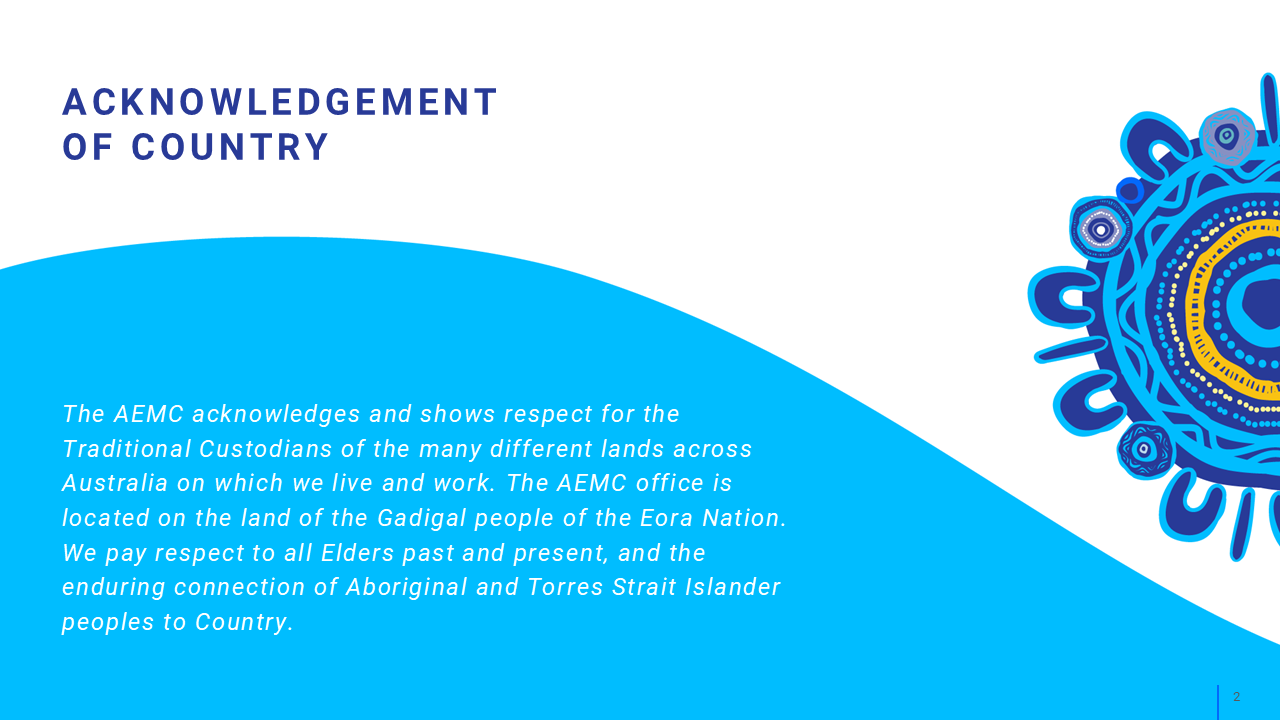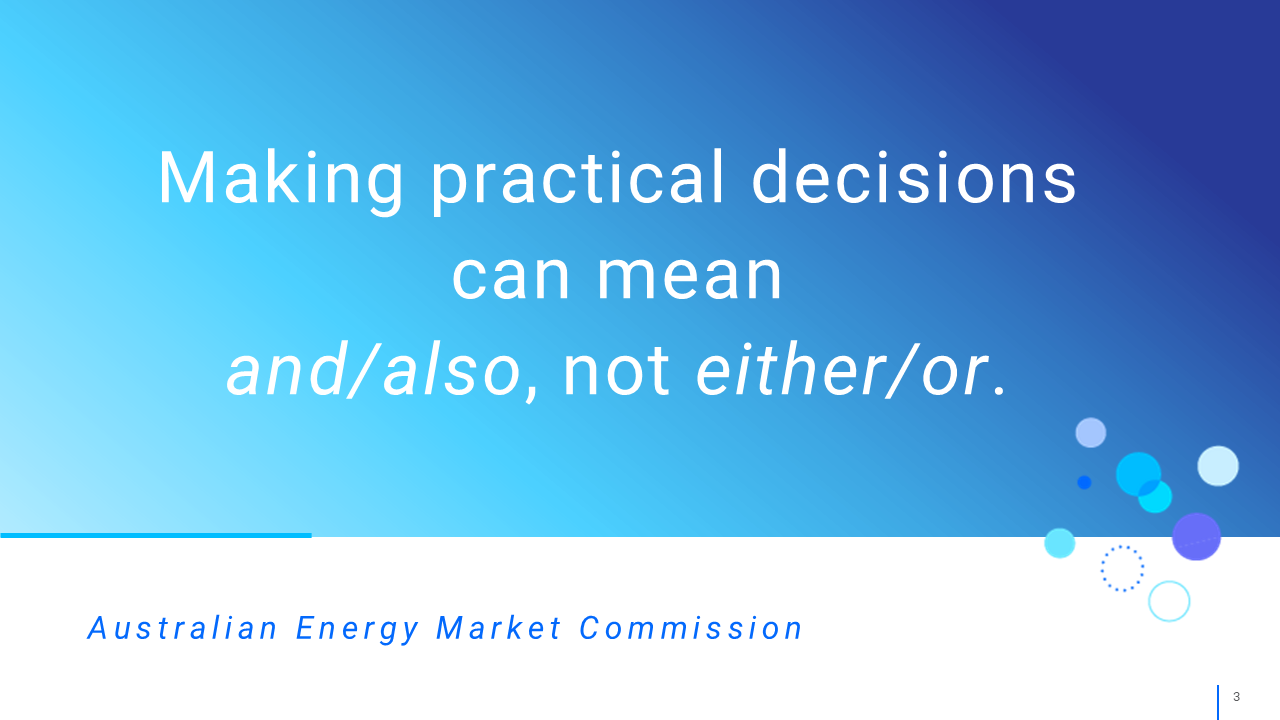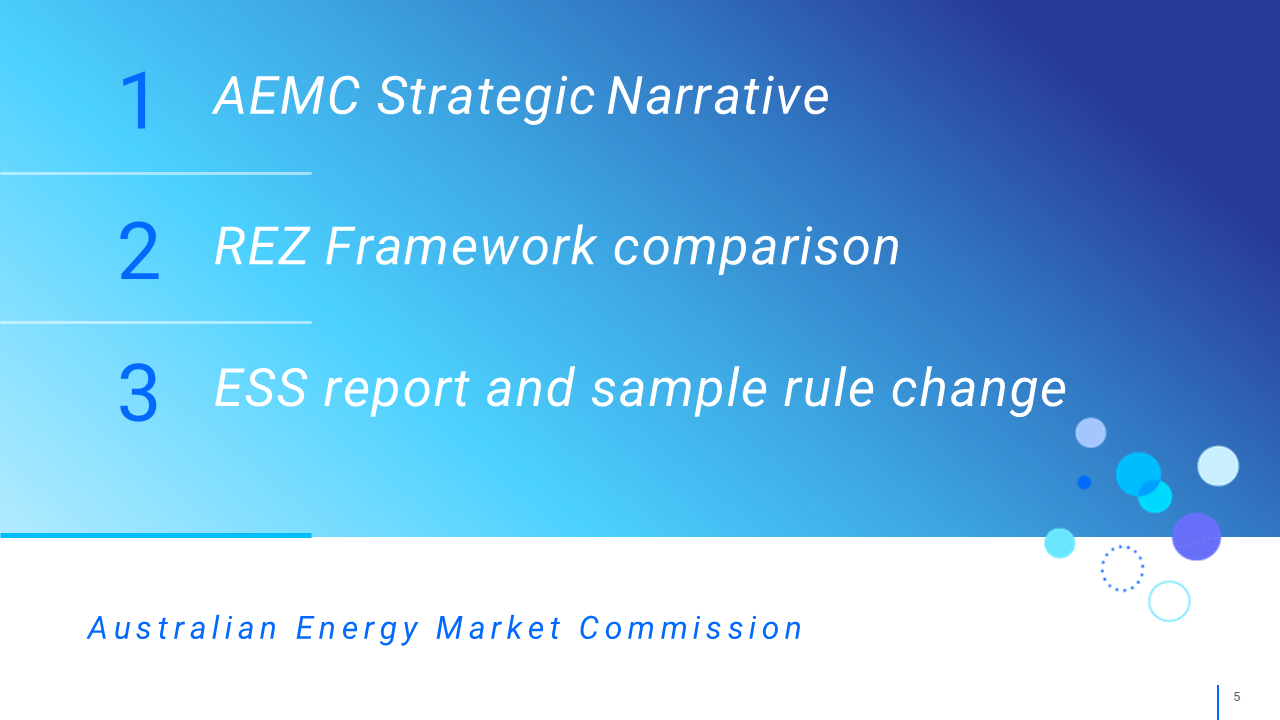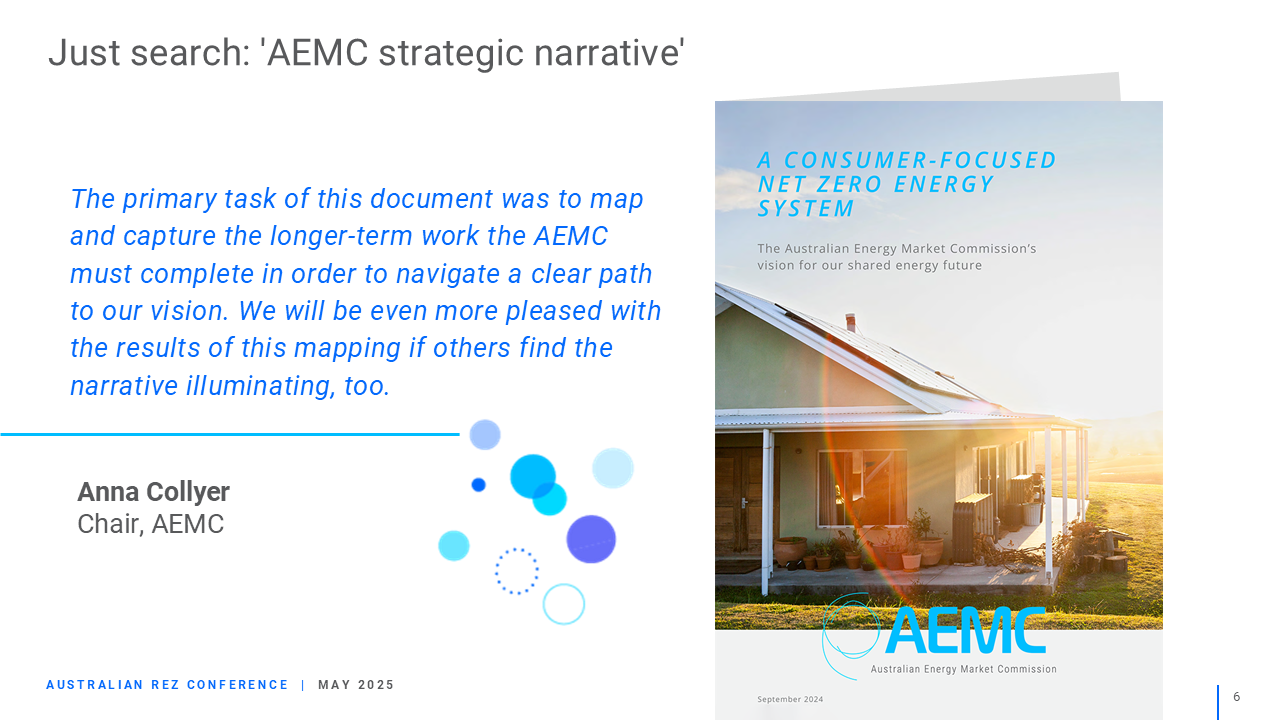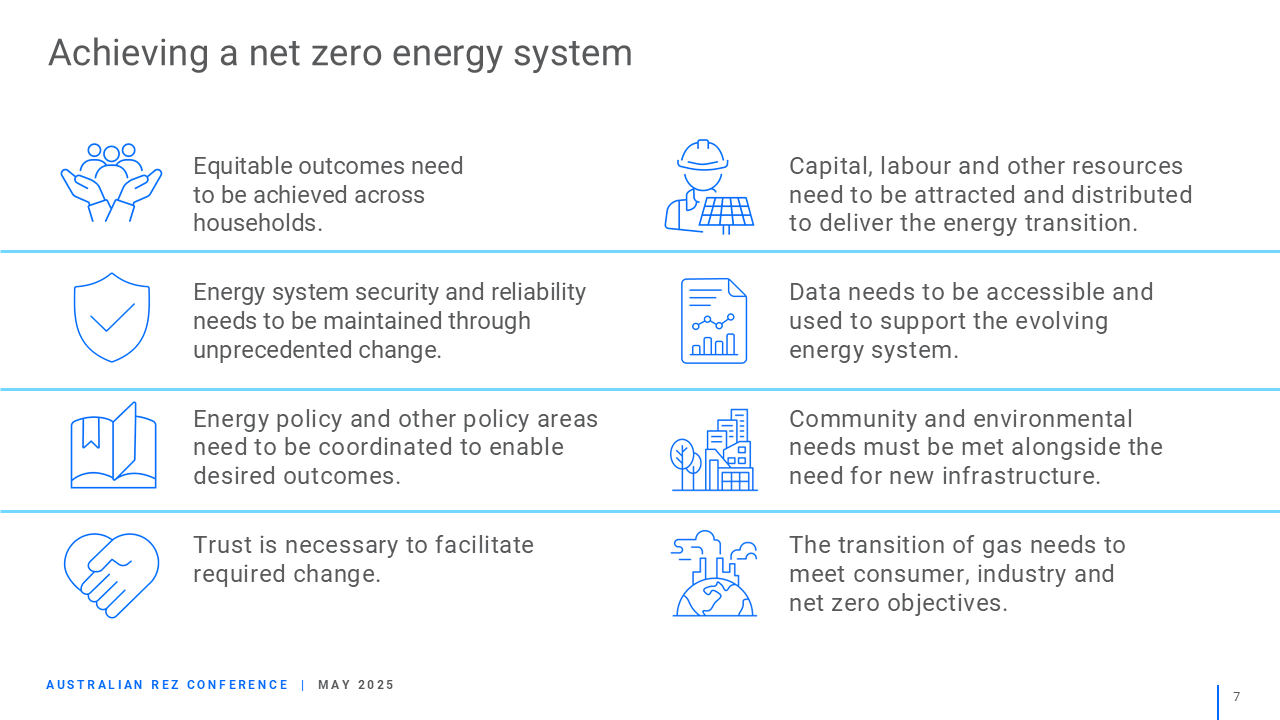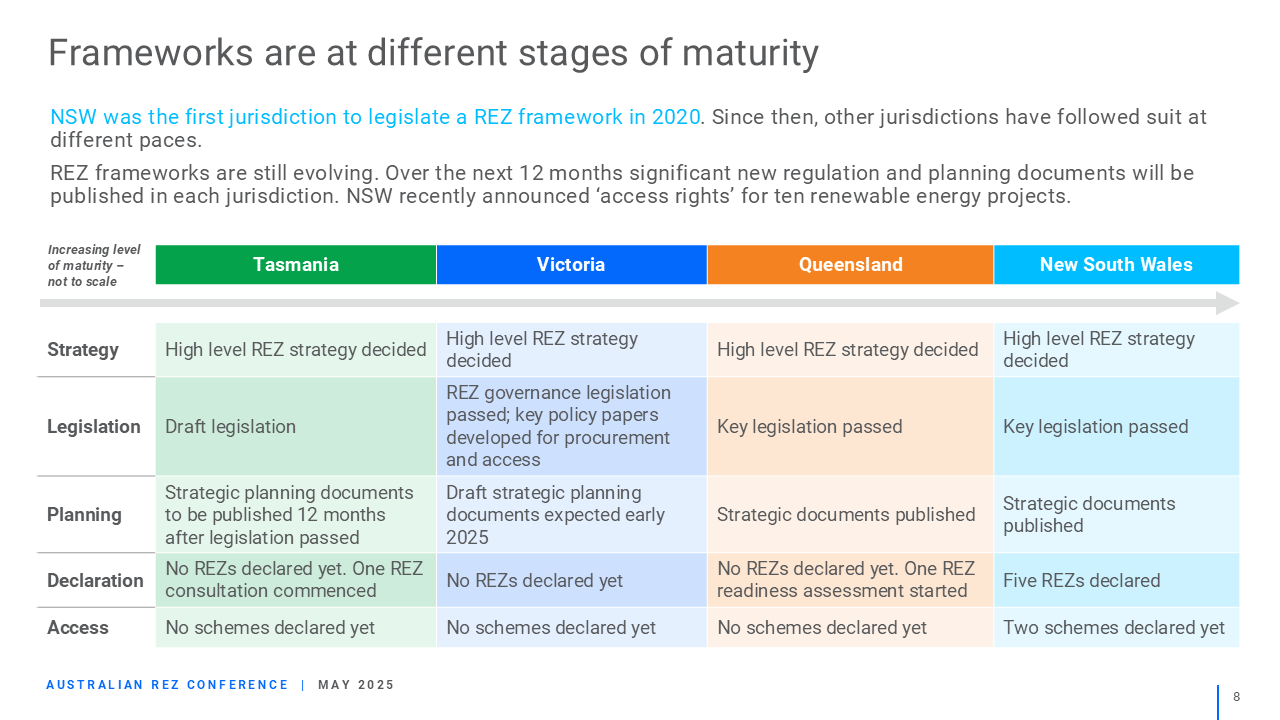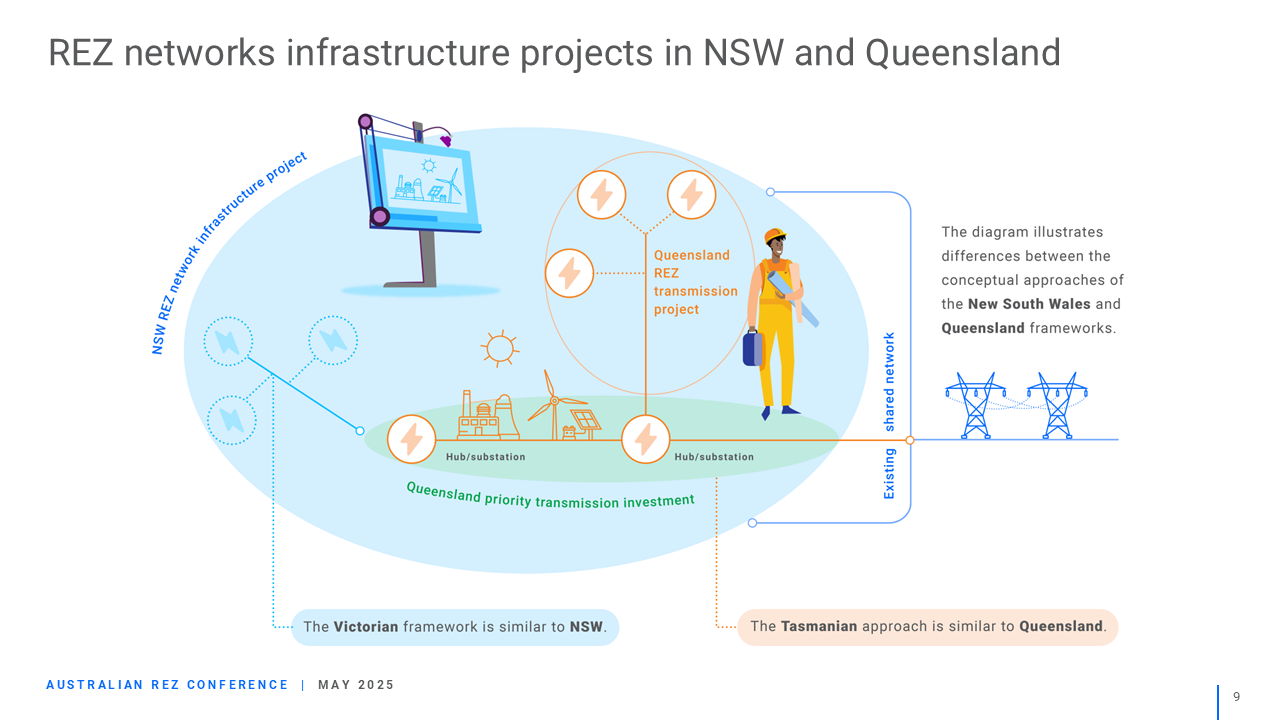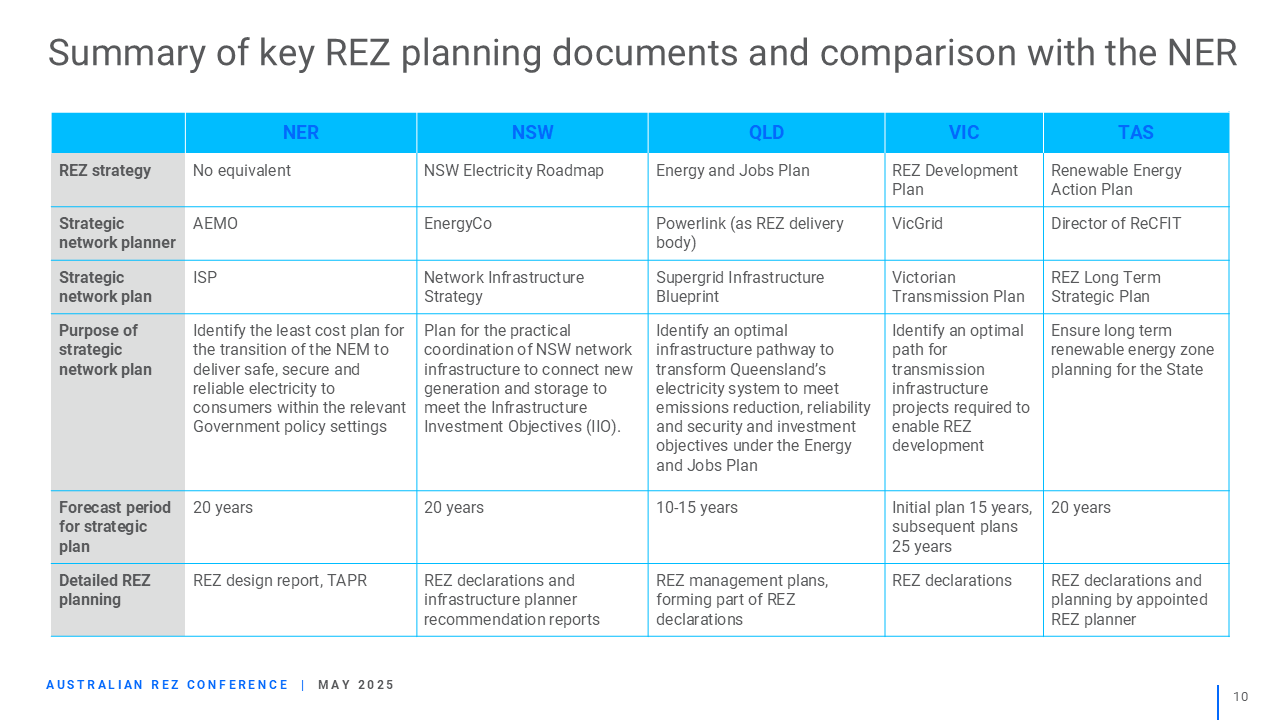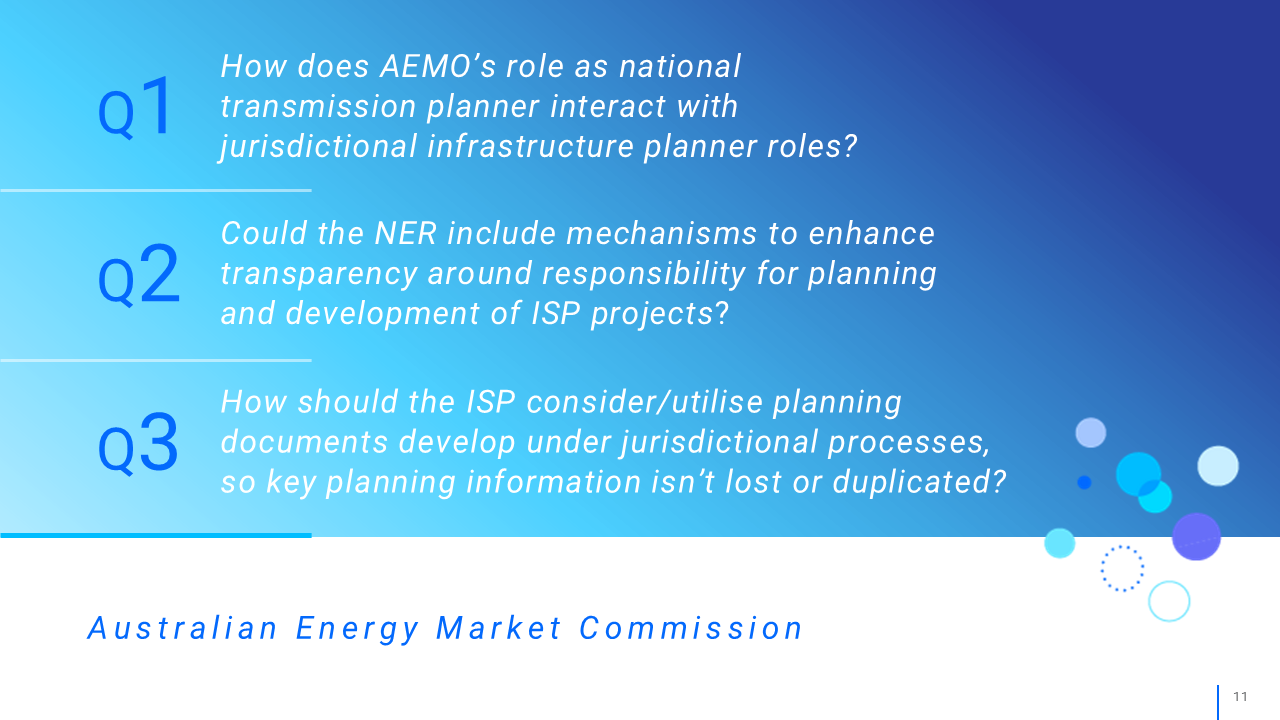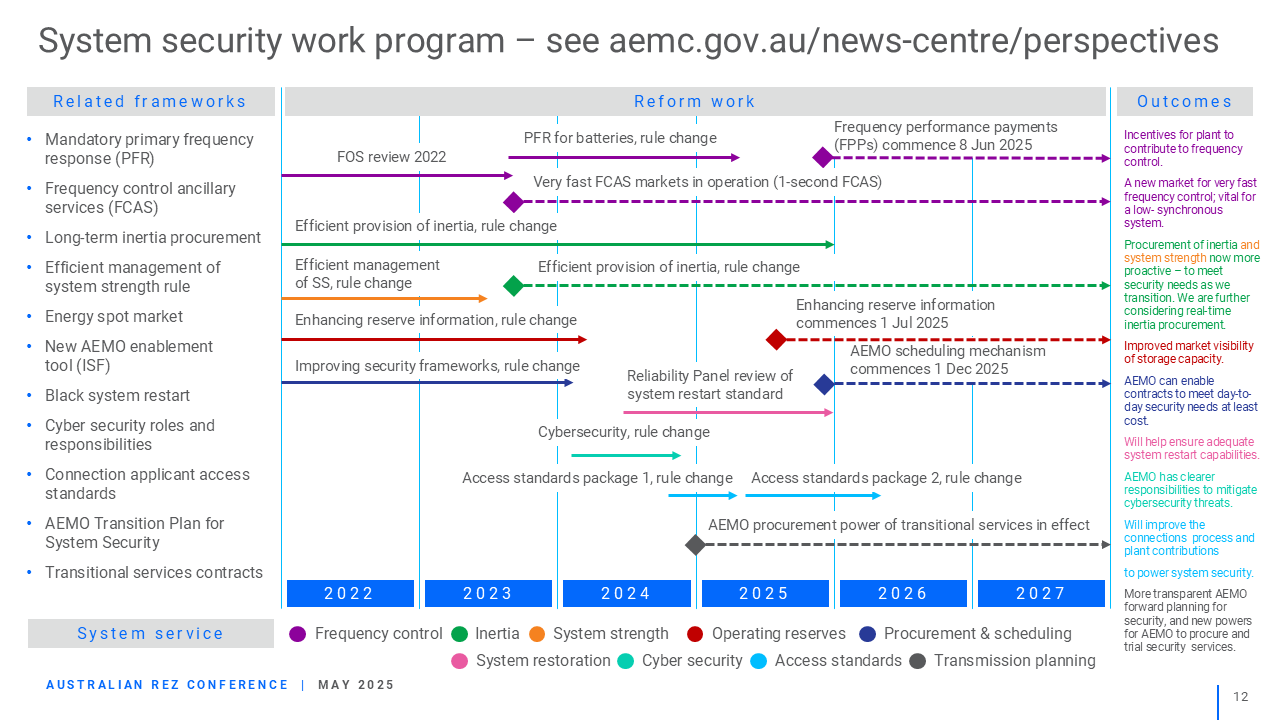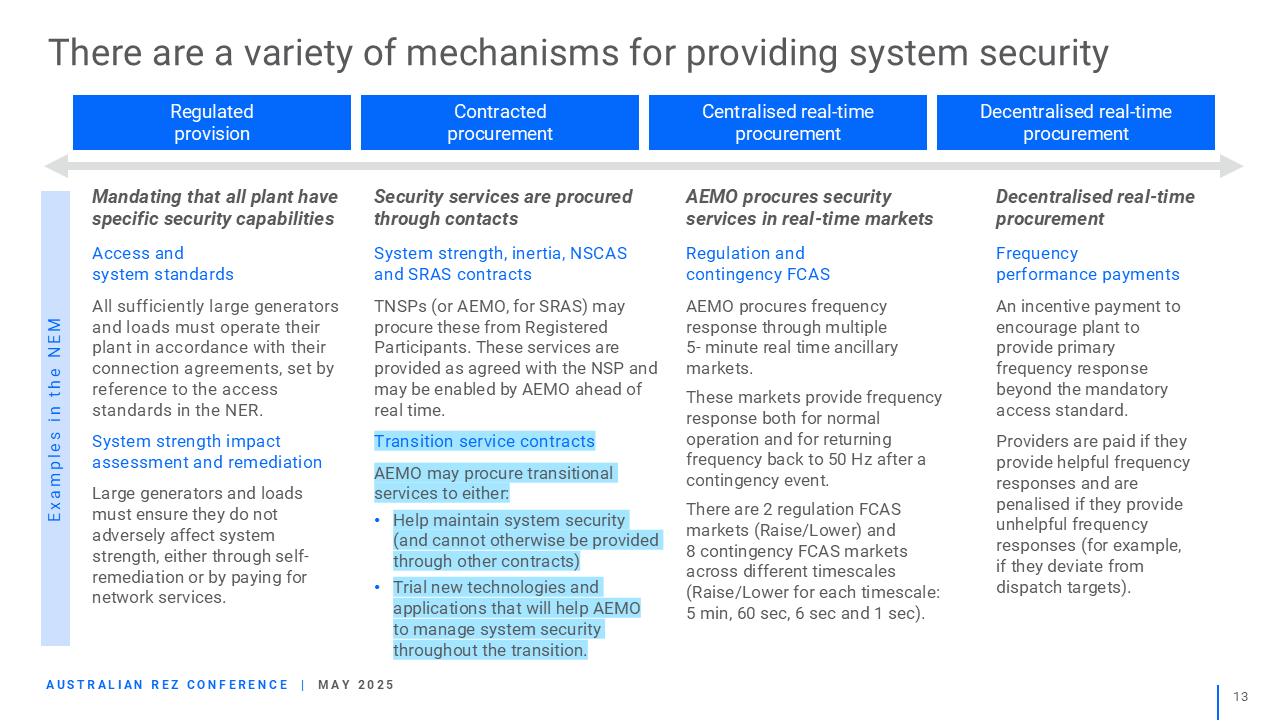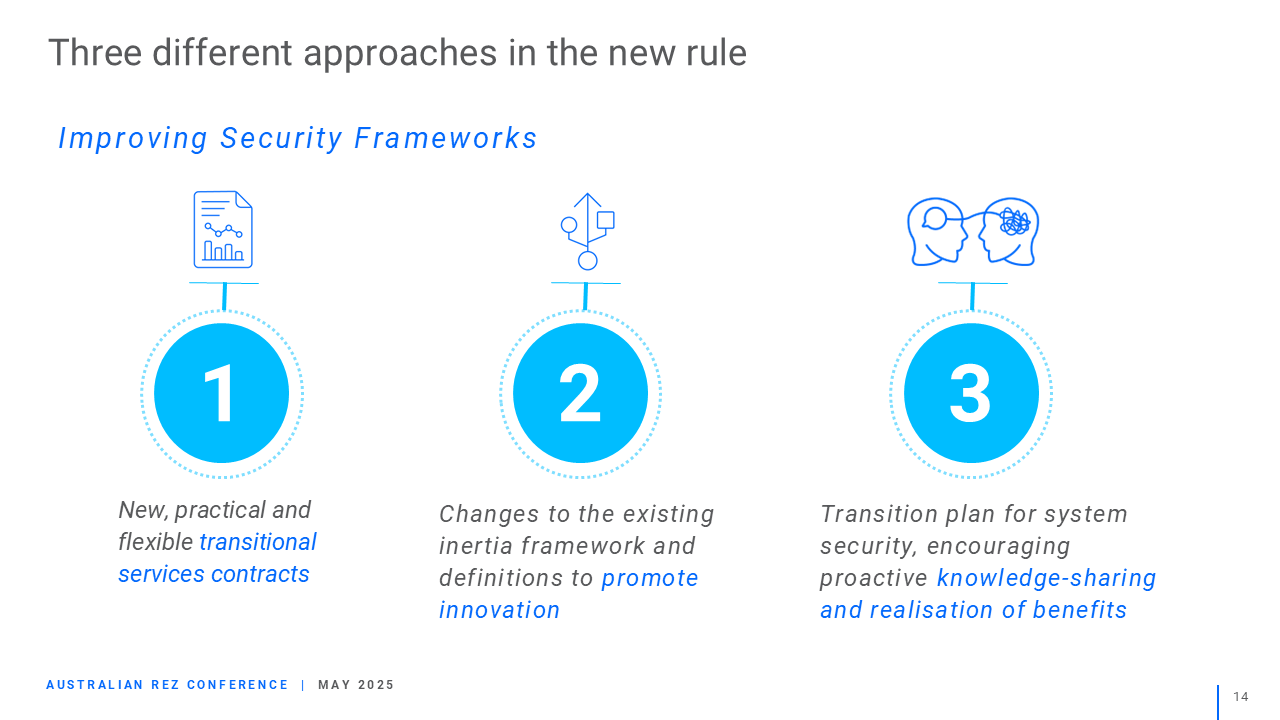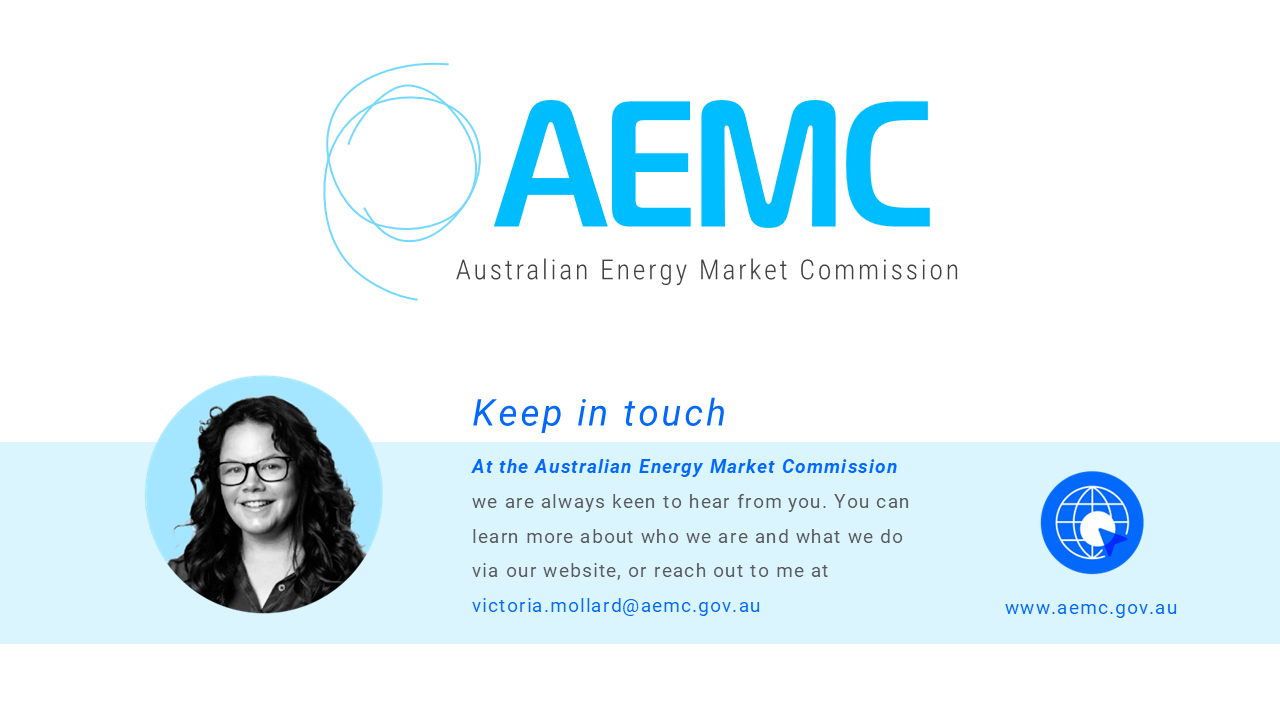Victoria Mollard
5th Annual Australian Renewable Energy Zones Conference
Swissotel, Sydney
Hello and thank you for the welcome. I’ve been looking forward to this conference for many reasons, and it’s great to finally arrive at the day!
Like others before me, I acknowledge the traditional custodians of the land we’re meeting on today, the Gadigal people, who would also meet and share stories on these grounds.
As we transition to a cleaner energy future, we recognise that First Nations peoples have cared for and safeguarded the lands we now call home. I pay respect to the enduring relationship that Aboriginal and Torres Strait Islander peoples have to Country.
Interesting times
We live, as they say, in interesting times, and very few sections of human activity are currently as ‘interesting’ as the work we are all doing for the energy sector.
And that’s my context for today: the complex, fascinating, and very changeable environment in which we all do our work.
For us at the Australian Energy Market Commission, that work is making the rules and reviewing market arrangements that will enable the best possible outcomes for consumers.
Whether you work in consumer-facing roles, in a market body or government jurisdiction, or with one of the many market participants, we’re all in the same position right now.
We’re all navigating a complex and rapidly changing world with sometimes contradictory demands. We’re all looking for practical ways to make progress during what our Commission Chair Anna Collyer often calls the ‘messy middle’ of the energy transition.
We need fast technological innovation and new ways to think about generating and sharing energy, and we also need the security of backup power and the traditions of sharing our resources across the NEM.
With so many equally valid demands and so many unavoidably unknown factors of change, it can be hard to commit to the next steps, especially at the pace we know is needed to meet our decarbonisation goals. So, what do we do?
At the AEMC, that means we're trying to proactively address uncertainties and engage with stakeholders to help shape the future of the energy sector.
We are balancing the need for immediate fixes with the flexibility required for an evolving market, recognising that both technologies and understandings are constantly sprouting off into new directions.
One of the concepts we've started to embrace is recognising that we have left the older, easier Land of Either/Or behind. We’re now living in a more rapid and pragmatic decision-making space, which, for the purposes of this speech, I will call the Universe of ‘And/Also’.
A key characteristic of the Universe of And/Also is to navigate complexity and still make progress by being able to hold multiple and potentially conflicting positions simultaneously.
It's not as confusing as that might sound!
Let’s do a quick thought experiment to demonstrate my point: I’m a big fan of coffee (aren’t we all?) and I greatly look forward to my first coffee in the morning.
So imagine – there’s a coffee cup and it's only a quarter full. Now, would you say that’s ‘too much’ coffee OR ‘not enough’ coffee?
Well if it's first thing in the morning and I’m drinking it, I would absolutely say it’s not enough coffee. I need my full coffee hit!
However, if I’m dressed for work and about to leave and I spill that quarter-cup down my outfit – it’s now both definitely not enough coffee, and it’s also ‘too much’!
Both things are true.
This isn’t some wild notion of mine: there are many versions of this concept in literature – you may have heard of managing through ‘paradoxes’ or ‘polarities’.
Psychologists might call it cognitive dissonance…
You and I probably just call it another Tuesday…
But the base concept is this: in times of great flux and complexity, we have to be able to hold multiple contradictory concepts together at the same time rather than holding back on decisions until we see just a single, simple way forward.
This is the and/also – not either/or.
As I said at the start, we need all these things: new and traditional, rapid and well-considered, locally sensitive and nationally crucial.
Well, today I’m going to talk about how the AEMC is approaching these complicated decisions as practically as we can.
First, I’ll talk to you about the Strategic Narrative we recently published that describes how we navigate our way through the uncertainties and complexities of this messy middle stage.
Second, I’ll share a snapshot from a new report comparing the REZ frameworks being developed in NSW, Queensland, South Australia and Tasmania – whose architects we heard from this morning.
Finally, I’ll talk to you about our system security work program, where we very much manage the twin contradictions of security and uncertainty. I will include an example of a recent rule change we’ve made.
This is a rule about improving security frameworks, and it fully accepts that we’re living with unknowns all around us. But it also accepts that we still need to get on with the job of making the best decisions we can and remaining open to change, and enabling all of you to keep moving forward as everything changes around us.
AEMC Strategic Narrative
To start, late last year we launched a report we call our Strategic Narrative, which you can Google to find on our website, and I know many people have already downloaded it from the link in our newsletter.
In this And/Also world, full of uncertainties, it’s even more important to be clear about what our ultimate future destination is, no matter the changing paths we face along the way.
So, this narrative maps the longer-term work the AEMC must complete to successfully navigate a clear path to our vision, which is a consumer-focused net zero Australia.
Initially, this was an internal document. It helps our annual prioritisation process where we assess what we’re going to spend our time on, and also helps us keep our eyes on the future during our rule changes or reviews
As we developed this report, it became even clearer that we need to prioritise multiple, and sometimes contradictory issues, simultaneously.
This is why we framed it as a narrative, separate to our more conventional strategic plan. The narrative approach freed us to consider potentially conflicting outcomes against the long-term gains that we all need to achieve.
We set out the eight significant opportunities and challenges that we think are important for achieving a consumer-focused net zero energy system, even if in the immediate term they appear to have very different characteristics.
For instance, to achieve energy transition benefits for everyone across Australia, we need both customer-facing goals (like giving consumers clear and actionable information) and grid-scale features (such as innovations that drive low-cost energy).
So what, you might be asking yourselves? It sets out our view of the future state of the transition and we also incorporated the thinking from every other major player in the energy market – your plans, your road maps, your frameworks. That means we are confident this narrative isn’t just helpful for us, it can be helpful for you, too. I’m very happy to discuss it further with any of you who would like to see more.
REZ framework review
Moving on to one of the more upbeat acronyms of the energy sector: REZs.
We recently published a report that captures the approaches that REZ jurisdictions in the NEM are undertaking. If you want to read more, you can also find it on our website later.
As we’ve heard this morning – and you, of course, know – over the past four years the states and territories have introduced regulations to enable the development of REZs. These include components relating to network planning and investment, economic regulation, access schemes and connection process.
These frameworks have progressed well, so we felt it was a good time to compare and contrast them, and then to share that information.
We wanted to better understand the different schemes: their alignment and their differences. Part of this was considering whether there were any ‘lessons learnt’ or ‘best practice’ from these frameworks that would be useful to consider bringing into the NEM.
And yes, not surprisingly for Australia, where we have a national curriculum but every state leaving certificate has a different name, the developing REZ frameworks do vary between states, but all have similar purposes and similar intent.
Each framework's approach makes sense when you allow for the variations in state geographies, economies, communities and energy histories.
As you can see on this slide, the frameworks are at different stages of maturity. NSW was the first jurisdiction to legislate a REZ framework in 2020 and recently announced the awarding of access rights to 10 renewable energy generators for the Central West R, and just last week the Victorian Transmission Plan came out with seven proposed REZs
Our work sought to consolidate all the information in one place. It’s a great snapshot of the arrangements.
We found that while there were obvious variations, there were many similarities too.
Before getting into the details, it's useful to understand how jurisdictions are conceptualising REZ transmission projects.
In Queensland and Tasmania, REZ transmission projects are conceptually similar to shared connection infrastructure, such as Designated Network Assets under the national rules. Represented by that orange radial spur at the top of the diagram towards the right-hand top corner, by that overloaded engineering type man.
They are designed to coordinate scaled, shared connection infrastructure for projects that are connecting to the grid. Many of these projects have already been identified and there is some confidence that they will proceed. While consumers bear the risks of these assets being underutilised, connecting parties are intended to fund them.
In contrast, in NSW and Victoria, REZ transmission projects are conceptually similar to the shared transmission network. These projects cover both shared connection infrastructure as well as broader, ‘core’ REZ transmission infrastructure deeper in the network.
So in those two states, a REZ could comprise all of the infrastructure in the blue circle - both the radial connection assets as well as the shared network.
In this case REZs are sized based on modelled efficient planting of generation and storage, rather than just by reference to identified projects. Consumers will fund REZ transmission projects, but the cost to customers may be reduced through access fees paid by connecting parties.
NSW, Victoria and Queensland also have frameworks that apply outside of these concepts to accelerate investment in the shared transmission network, which are detailed further in the report.
We also found that all jurisdictional REZ frameworks have amendments to the national framework in five key areas:
REZ assessment and planning
Transmission investment approach
Cost recovery of transmission investment
Access to REZs
Connections process
To take the first topic as an example—REZ assessment and planning— this is what you can see on the slide… but, my apologies for the small print if you’re up the back! Please feel free to photograph this slide and also to download the report from our website.
We can see here that the national framework and each of the state schemes share commonalities. This includes alignment on forecast periods that the planning considers, even though the planning's ‘objective’ is different.
Our report does a similar stocktake for the other areas relevant to REZs.
We hope this is a useful resource to help participants understand the commonalities and differences between the various REZ schemes and the NER framework.
And back to my earlier polarities point, this work represents the And/Also of REZ frameworks.
It’s healthy to have some differences in approach so we can learn from each other what works best for how to encourage REZs in different settings
And it’s also important that REZs work together in such a way that we all still benefit from the traditional security of a shared grid.
Because even accepting our varied approaches – all NEM jurisdictions are still interconnected.
It is partly for that reason that last year, our transmission access reform project recommended the introduction of a collaborative forum between jurisdictions, market bodies and REZ strategic network planners to support the effective delivery of jurisdictional schemes.
Collaboration efforts will focus on sharing information and lessons to assist in understanding, coordinating and addressing current and emerging design challenges with jurisdictional REZ schemes. It will also consider the schemes' impacts on the broader power system, such as how congestion patterns may change both within and outside REZs.
The forum's first meeting was earlier this month, and we are looking forward to continuing to participate and knowledge share through this group.
The other key learning for us from comparing the REZ frameworks was that it is not always clear how the state-based planning documents that I talked about earlier are intended to interact with the NER documents of the ISP and transmission annual planning reports.
This raises questions we are keen to explore. Including:
How does AEMO’s role interact with jurisdictional roles?
Could the national rules provide ways to enhance transparency around responsibility for ISP projects?
And, how should the ISP consider jurisdiction plans so that key information isn’t lost or duplicated?
In another and/also - we recognise we need REZ jurisdictional frameworks AND we ALSO need the ISP – and we need these really important instruments to work together
The AEMC has a statutory obligation to review the ISP framework by 1 July 2027. We are currently scoping this work and plan to consider these questions as part of it.
We will formally kick off this review early in the next financial year.
The wonderful Alisa – who is our sponsor for this review – is in the audience here so please chat to her or me at the break.
Essential System Services
Finally, let’s turn to system security now, and the work the AEMC is doing relating to essential system services (ESS). These are critical to maintaining overall power system security and keeping the network within its technical operating envelope.
We devote a considerable amount of our effort to ESS, as you can see from this snapshot that provides a summary of our work to date in this area – and again I apologise for the busyness of this slide! Please take a photo of it to read later or use the link at the top of the slide to find our full report.
As we move through this transition, in the many messy middle stages it will have, it’s really challenging to define and manage security services.
The generation mix is changing at pace and, as you know, where once we relied on a small number of very large bits of machinery, now we have a vast proliferation of power sources.
That includes millions of household rooftops, and a growing number of utility solar, wind and battery connected to REZs around the states.
Australia is at the global forefront of these challenges, adding to the complexity because there are very few other systems in the world that can inform the changes we need to see in ours.
Thermal synchronous generators are continuing to retire and more and more inverter-based resources are connecting to the grid – and as I have just described, there are different frameworks being rolled out for investment across the NEM.
We can’t definitively know the NEM’s final post-transition composition yet, and system operators have to develop their understanding of security amid many rapid technological advancements.
Our understanding of the system's needs is changing in parallel to the evolving capabilities of new technologies to provide security. Not all security services are yet defined or able to be managed in real-time.
But – and here’s the real kicker…
We don’t believe we can wait for a time when we might be completely sure of the operating environment in order to make progress. The technology is moving ahead, regardless, and so is the demand for lower-carbon energy that will ultimately be cheaper, too.
Instead, our position amid the uncertainty is that we have to design system security tools that are practical, flexible, innovative, and proactive.
I’ll give you an example. In March last year, we published the Improving Security Frameworks for the Energy Transition rule (the highlighted bit in blue on this slide). The project aimed to better value and incentivise investment in security services in the NEM.
This is an intermediate measure, tailored to the transition phase. It will evolve as we advance our understanding of system needs and the capabilities of emerging technologies.
We deliberately put in place arrangements that will help us progress to the longer term, without knowing for certain what the longer term looks like
We hope our pragmatic step of accepting that we know there are unknowns, and designing for them, will mitigate the impacts of change.
In the final rule, we introduced three things:
The first is new, practical and flexible transitional services contracts that acknowledge the uncertainty of the transition. These are designed to be contracts AEMO can enter into with participants to try out new technologies for different services and learn from the experience.
The second is changes to the existing inertia framework and definitions to promote innovation – including making clear that synthetic inertia can be used as a substitute for inertia in the power system.
Finally, a transition plan for system security should encourage proactive knowledge-sharing and the realisation of benefits. The more information we share with the market, the more we can all learn and innovate together.
These measures collectively promote the long-term interests of consumers, advancing the National Electricity Objective (NEO).
This rule also reflects a reality of current knowledge: that we cannot yet define and separate all system services.
The rule is still being implemented, but some elements are already active. For example, AEMO recently published its first transition plan for system security, which sets out in detail where we are at and where we are heading. We’ve also seen contracts being developed: transitional services contracts are now available to manage minimum system load issues.
The situations we faced in this rule change demonstrated all the difficulties of the mid-transition – a lot of ‘and/also’ thinking went into catering for unknown outcomes.
We recognised that we had to embrace the uncertainty of a rapidly evolving sector AND decisively act rather than hesitate, given the innate risks of under-delivering these essential services.
Now, this framework offers many of you lots of opportunities to trial and test your new technologies and how they can contribute to future system security in the NEM. It will also lead to far more information becoming available to the market on what is needed in relation to system security.
Conclusion
So that’s it from me today!
I hope you’ll find something in these resources you can take back to the office and share.
Whether it’s from the way we are navigating these complexities with our strategic narrative, or the new work we’ve done comparing the four main REZ frameworks, or the potential opportunities we’ve created for you with these open approaches to evolving essential system services…
We really are all in this together, and I hope you’ll make use of the contact information up on this slide, as well as the chance to chat to Alisa and me later, to see how we can help each other work our way through.
Thank you.

